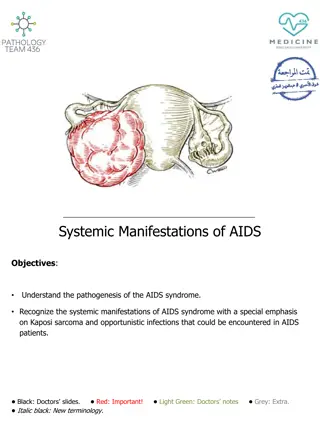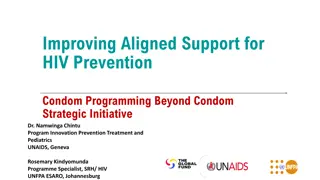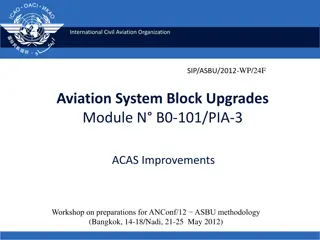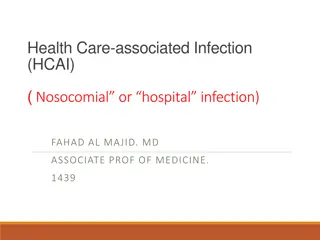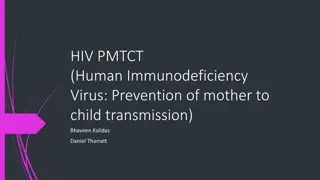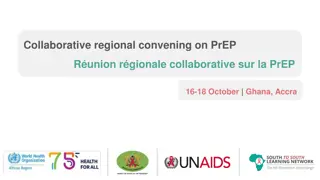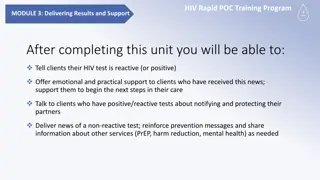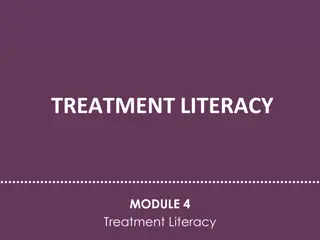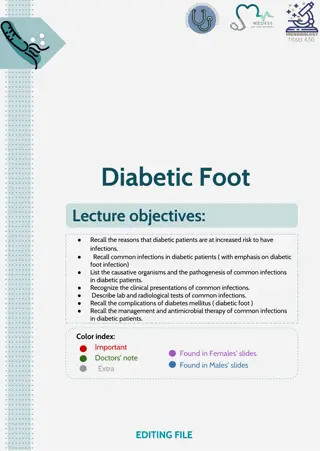Prevention and Care of Airborne Infections in TB/HIV Settings
In this session, participants will learn the importance of infection prevention and control in TB/HIV care, levels of prevention in airborne infections, strategies to prevent TB transmission in healthcare settings, and patient management steps to prevent TB transmission. The spread of TB, risks of transmission, and prevention measures including primary, secondary, and tertiary prevention strategies are discussed to enhance understanding and implementation of effective infection control measures.
Download Presentation

Please find below an Image/Link to download the presentation.
The content on the website is provided AS IS for your information and personal use only. It may not be sold, licensed, or shared on other websites without obtaining consent from the author. Download presentation by click this link. If you encounter any issues during the download, it is possible that the publisher has removed the file from their server.
E N D
Presentation Transcript
Basic HIV Course for Health Professionals Session 11: Prevention and Care of Airborne Infections
Learning Objectives By the end of this session participants should be able to: Explain why infection prevention and control is important in TB/HIV care Identify three levels of prevention in airborne infections Identify infection, prevention and control strategies to prevent TB transmission in the healthcare setting Explain seven steps of patient management to prevent transmission of TB in health care settings
How is TB Spread? Person-to-person through air by droplet nuclei that produced when a person with pulmonary or laryngeal TB coughs, sneezes or sings
TB Spread PLHIV may become infected / re-infected with TB can progress rapidly from TB infection to disease due to immune suppression Health care workers are also at high risk of TB infection due to frequent exposure to patients with infectious TB disease Rising incidence of multidrug-resistant tuberculosis (MDR-TB) and extensively drug- resistant tuberculosis (XDR-TB) have led to a stronger focus on TB infection control
Risk of TB Transmission of Infection is Determined by: Infectiousness of person with TB Environment in which exposure occurred Duration of exposure Virulence of the M tuberculosis strain
Prevention of Airborne Infection Levels of TB Prevention Level Interventions Infection control measures in health settings to prevent transmission to patients and staff Isoniazid therapy to prevent progression to TB disease Intensified case finding Early diagnosis and treatment BCG vaccination does not prevent infection with TB, but does prevent severe forms of childhood TB Diagnosis and treatment before complications develop Primary Prevention: Preventing TB infection Secondary Prevention: Preventing TB Disease Tertiary Prevention: Preventing TB morbidity and mortality
Infection Control Practises (ICP) (1) Strategies aimed to protect health workers, patients and community from acquiring nosocomial infections such as TB infection Intended to help health managers and workers minimise risk of TB transmission Clinics and Community Health Centres should have at least one person responsible for overseeing Infection Prevention and Control
Infection Control Practises (ICP) (2) The World Health Organisation divides ICP into: Administrative/managerial and work practice controls Environmental Controls Personal Respiratory Protection
Administrative/Managerial and Work Place Controls (1) Have the greatest impact on preventing TB transmission - first priority in any setting regardless of available resources Aimed to provide a framework for TB infection control interventions at all levels and settings Designed to support and facilitate implementation, operation, maintenance and evaluation of all TB infection control activities
Administrative/Managerial and Work Place Controls (2) Framework for TB infection Control First line of defence: Respiratory hygiene/cough etiquette Screening, investigation and referral Written policies and practices developed to reduce risk of TB transmission by preventing generation of droplet nuclei Infection Prevention and Control Plan
Main Goals of Work Practice and Administrative Controls 1. Administrative support, including quality assurance 2. Further reduce spread of infection 3. Isolation of patients with PTB: 4. Educate, train, and counsel HCWs about TB 5. Educate people to increase community awareness 6. Patients should be taught on cough etiquette 7. Always do sputum collection in fresh air space 8. Coordinate, communicate with TB programmes; referrals 9. Write this in an infection prevention and control plan
Seven Steps for Patient Management to Prevent Transmission of TB in Health Care Settings Refer to pages 200 - 201 of your participant manual to see a chart outlining these steps
Environmental Controls Second line of defence in preventing spread of TB Only effective if administrative controls in place and include ventilation and filtration Ventilation Movement of air inside with air from outside to reduce or remove nuclei droplets from air Movement must ensure directional airflow Filtration mechanical way of taking out particles High Efficiency Particulate Air (HEPA) filters Ultraviolet Germicidal Irradiation (UVGI): TB bacteria can be killed by ultra violet light
Personal Protective Equipment Use of respirators that contain a special filter material that protects wearer from inhaling bacilli A respirator is a device for personal respiratory protection that: covers mouth and nose and is certified to have specific filtration capacity
How to Use N95 Respirators Be sure your respirator is properly fitted! Should fit snugly at nose Respirator should cover chin and create a seal Don t forget to wear it!
When to Fit Test Before wearing respirator in the work place If person has: Any facial changes Significant weight change Change in respirator size, make, model
Factors Affecting Respirator Seal Facial Hair Facial Bone Structure Dentures Facial Scars Eyeglasses Excessive make up
Fitting an N95 Respirator (1) Cup respirator in your hand, with nosepiece at fingertips, allowing headbands to hang freely below hand Position respirator under chin with nosepiece up Pull top strap over head so it rests high at back of head Pull bottom strap over head and position it around neck, below ears Use fingertips from both hands to mould metal nosepiece to shape of nose by pushing inward down both sides of nosepiece
Fitting an N95 Respirator (2) Prior to each use, perform a user seal check by placing both hands completely over respirator and exhale If you feel air leaking around the nose, readjust nosepiece If air leaks at edges of the respirator, work straps farther back along sides of your head
Any Questions? Thank you!




